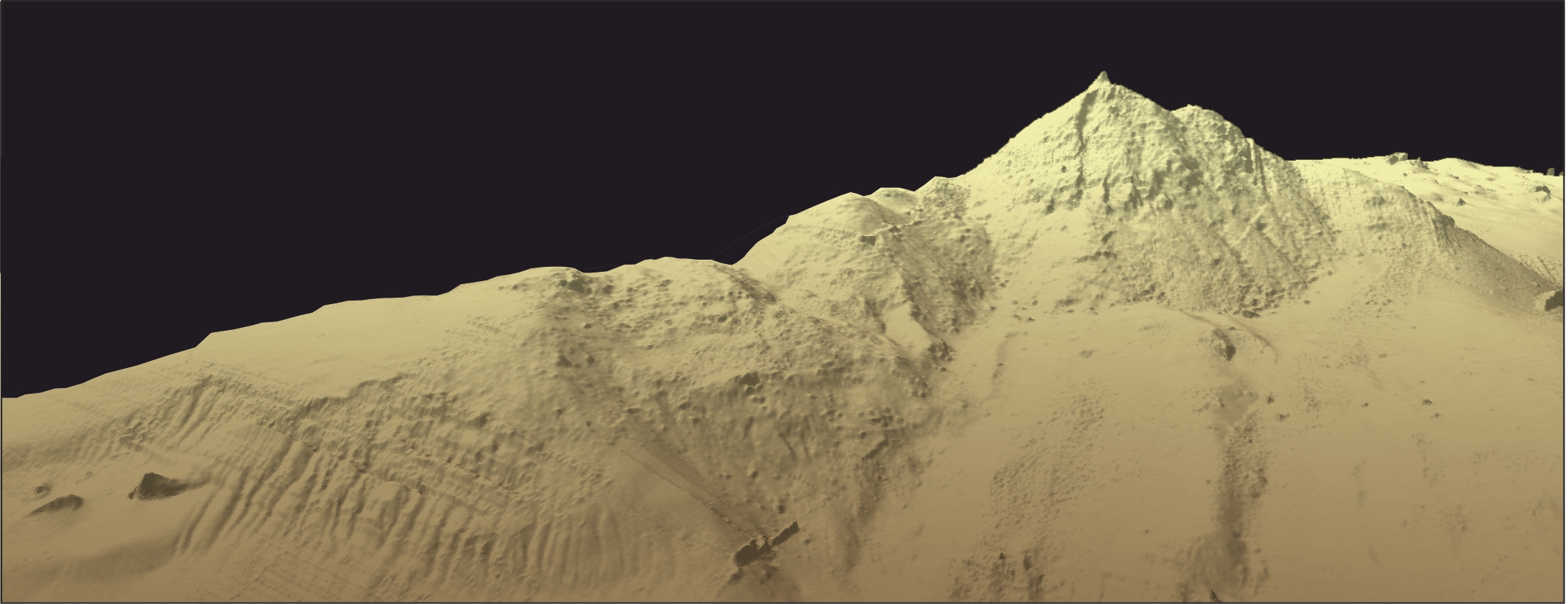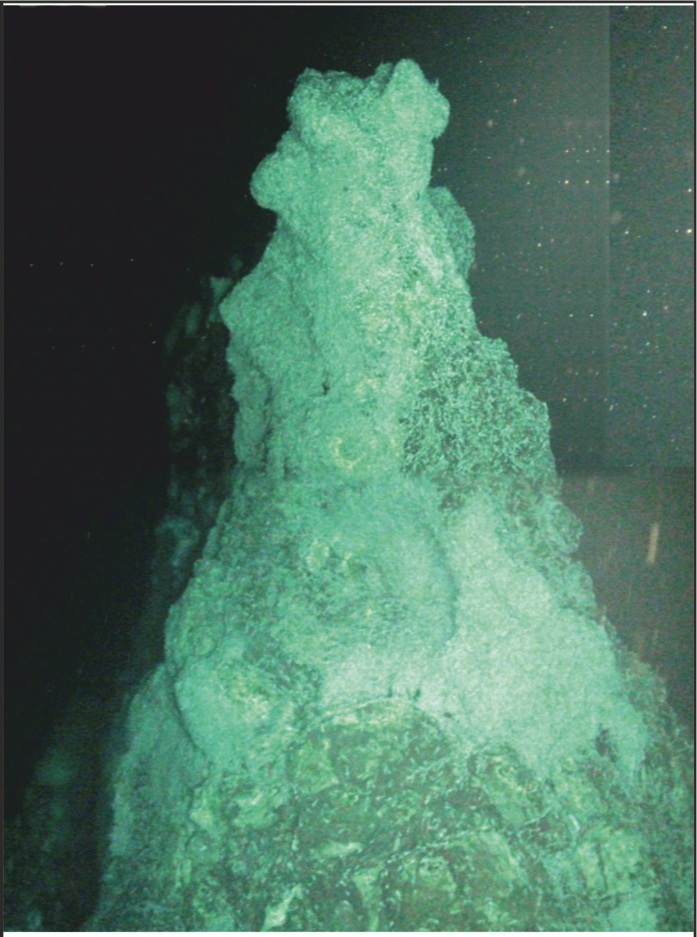New Kind of Hydrothermal Vent Forms Ghostly Chimneys

Deep in the Caribbean Sea, researchers have discovered a new type of hydrothermal vent unlike any seen before, with huge, ghostly mounds formed from an ingredient common in baby powder.
Typical hydrothermal vents consist mostly of sulfide minerals, but these vents in the Von Damm Vent Field south of the Cayman Islands are made mostly of talc, a magnesium-silicate mineral.
"This vent site is home to a community of fauna similar to those found at the Mid-Atlantic Ridge in the Atlantic Ocean," study researcher Matthew Hodgkinson, a postgraduate scientist at the University of Southampton in the United Kingdom, said in a statement, referring to the plate boundary that slices through the Atlantic. "But the minerals and chemistry at the Von Damm site are very different to other known vents."
Hydrothermal vents occur in spots where tectonic forces pull the Earth's crust apart like taffy. Magma from below the surface heats water in the crust, dissolving minerals into the seawater. Bizarre ocean creatures, including tube worms, snails and eels, are often drawn to these nutrient-rich sites. [Photos: See Creatures of the Deepest Deep-Sea Vents]

Researchers discovered the Von Damm Vent Field in 2010. The vents are on the western side of the Mid-Cayman Spreading Center, a tectonically active area. Talc mounds up to 246 feet (75 meters) tall loom over the seafloor there.
The vent system is hotter than scientists would expect, given that it is on the edge of the spreading center rather than right in the middle of the action, researchers said. The field transfers approximately 500 megawatts of heat into the surrounding ocean. This heat comes from hot water — 392 degrees Fahrenheit (200 degrees Celsius) — flowing at a rate of about 500 kilograms (1,100 lbs.) per second from the vents, the researchers reported on Dec. 22 in the journal Nature Communications.
When this hot, subsurface water hits the cooler ocean, minerals dissolved in the hot water precipitate out, creating ghostly chimney structures. In the Van Damm vent field, these chimneys are 85 percent to 95 percent talc by volume. Silica and a few sulfide minerals make up the rest of the chimneys' volume.
Sign up for the Live Science daily newsletter now
Get the world’s most fascinating discoveries delivered straight to your inbox.
"If more of these unusual sites exist, they could be important contributors in the exchange of chemicals and heat between the Earth's interior and the oceans, and may be missing from current global assessments of hydrothermal impact on the oceans," Hodgkinson said.
The Van Damm Vent Field sits on the slopes of an underwater mountain called Mount Dent, located 7,546 feet (2,300 m) below the ocean surface. Masses of shrimp crowd the vents, which also host snail species never before found elsewhere. Nearby is the Beebe Vent Field, the deepest vent ever discovered, at 16,273 feet (4,960 m) below the ocean surface. Those vents are home to flowerlike sea anemones, as well as other deep-sea organisms.
Follow Stephanie Pappas on Twitterand Google+. Follow us @livescience, Facebook& Google+. Original article on Live Science.

Stephanie Pappas is a contributing writer for Live Science, covering topics ranging from geoscience to archaeology to the human brain and behavior. She was previously a senior writer for Live Science but is now a freelancer based in Denver, Colorado, and regularly contributes to Scientific American and The Monitor, the monthly magazine of the American Psychological Association. Stephanie received a bachelor's degree in psychology from the University of South Carolina and a graduate certificate in science communication from the University of California, Santa Cruz.









